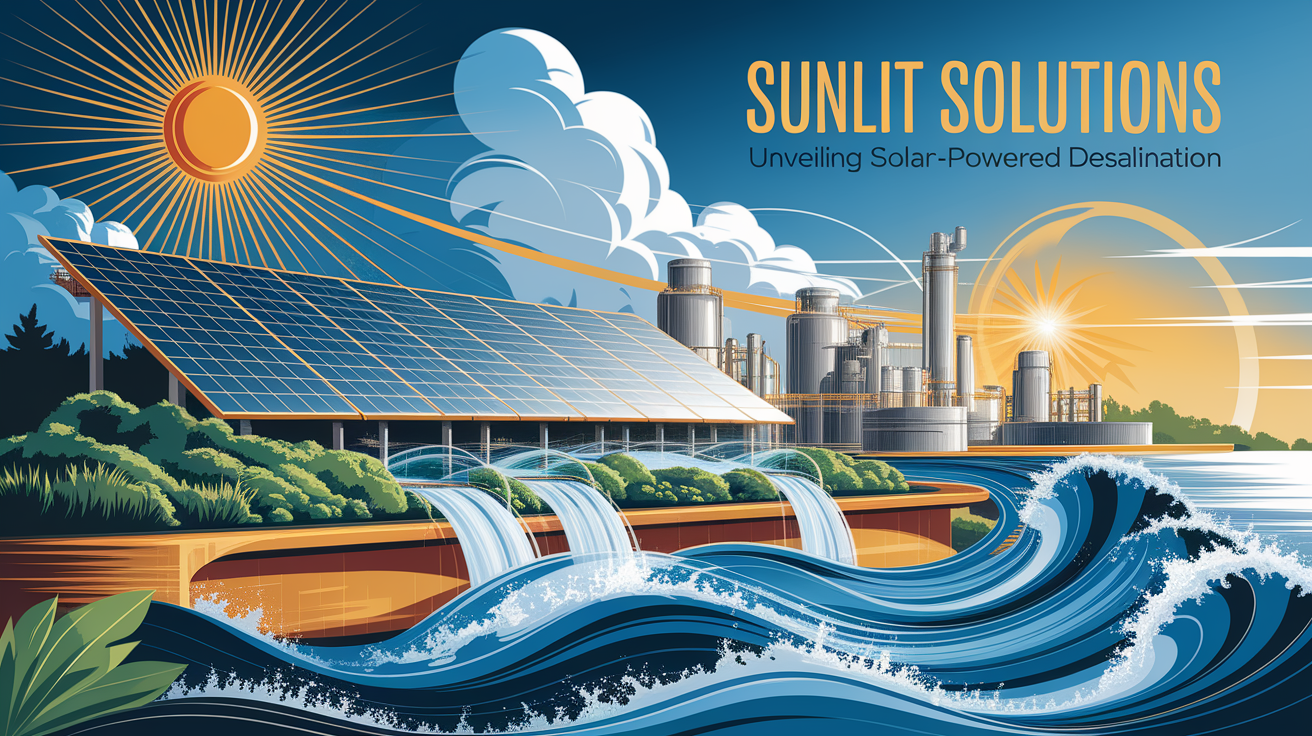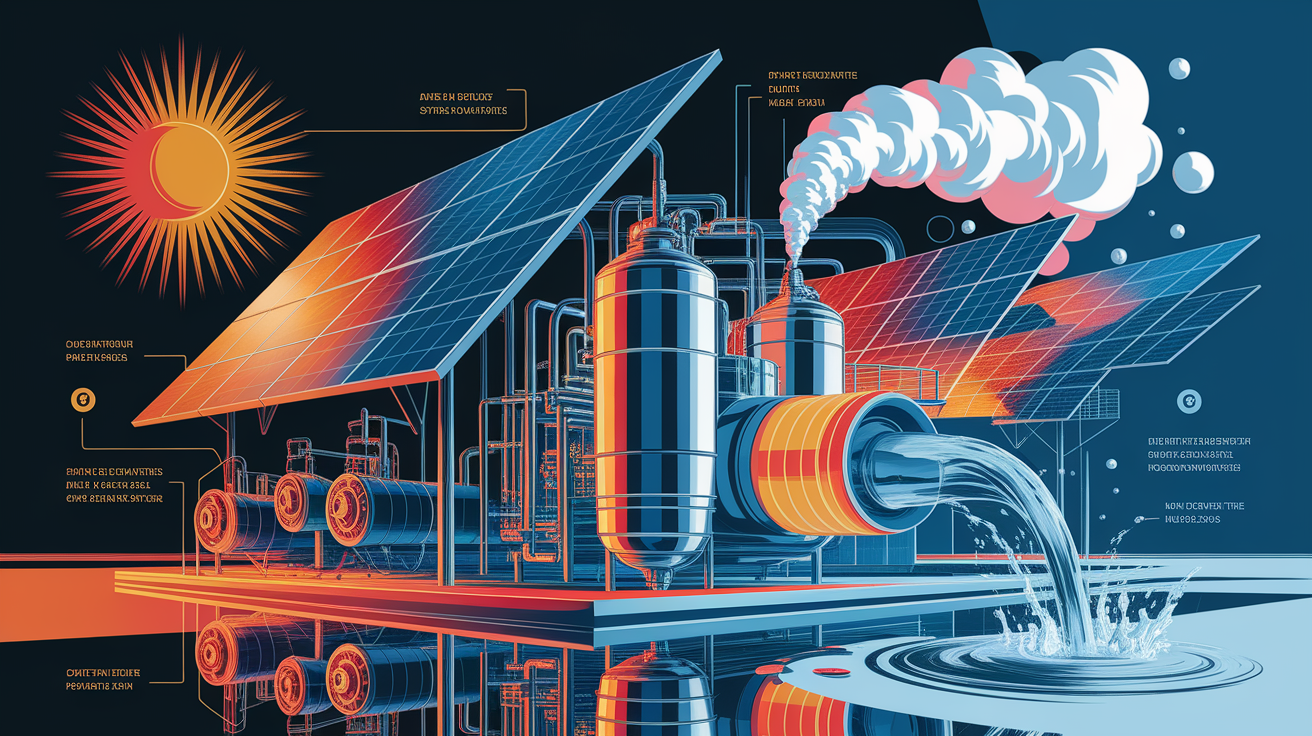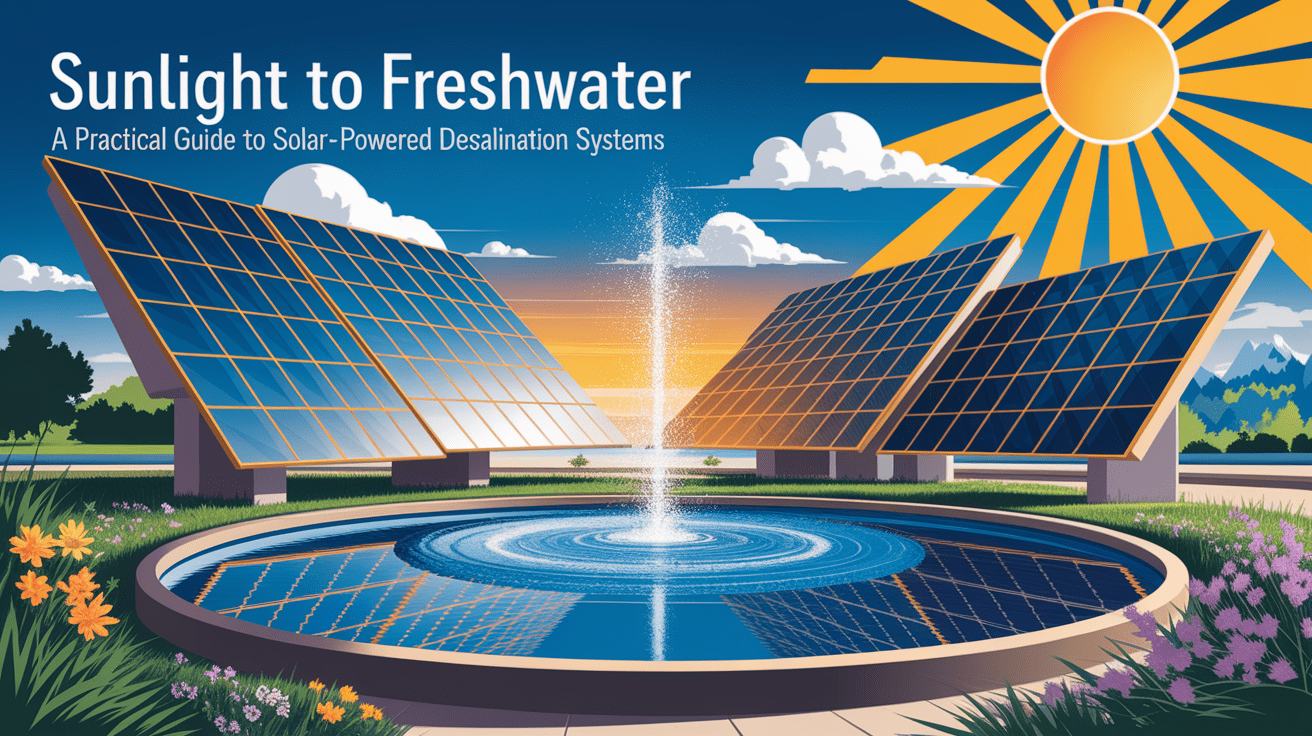Sunlight to Freshwater: A Practical Guide to Solar-Powered Desalination Systems
Sunlit Solutions – Unveiling Solar-Powered Desalination
Solar-powered desalination is redefining the landscape of water purification by enabling communities to transform seawater or brackish sources into potable water using renewable energy. By harnessing the sun’s abundant power, these systems provide cost-effective, environmentally responsible solutions to freshwater scarcity—a growing global concern aggravated by climate change and population pressures.

From isolated coastal villages to industrial outposts, these innovations offer grid-independent water treatment capabilities, reduce reliance on fossil fuels, and eliminate the need for complex energy storage systems. As described in comprehensive overviews of solar-powered desalination, the approach integrates either direct thermal processes or indirect electrical systems to deliver clean water in environments where conventional infrastructure is absent.
How Solar Desalination Systems Work
At their core, solar desalination systems exploit either the sun’s heat (thermal energy) or its light converted into electricity through photovoltaic panels. Two principal categories dominate:

- Direct solar desalination – Techniques like solar stills mimic the natural water cycle: sunlight evaporates saline water, condensation yields fresh water.
- Indirect solar desalination – Solar electricity powers mature desalination technologies such as reverse osmosis, multi-effect distillation, or membrane distillation.
Advanced systems now operate without battery storage, adjusting output dynamically to match solar irradiance, as seen in the MIT-developed designs. This eliminates energy losses associated with charging/discharging and reduces overall capital costs.
Key Components and System Configurations
While designs vary from portable emergency units to large municipal water treatment plants, most solar-powered desalination systems share fundamental components:

- Energy capture – Photovoltaic panels or solar thermal collectors for harnessing solar energy.
- Desalination module – Reverse osmosis membranes, solar still chambers, or multi-effect distillation stages.
- Energy recovery devices – Found in many commercial configurations, such as plug-and-play solar desalination solutions, they reduce power needs by up to 70%.
- Water storage and distribution – Tanks and pumping systems for delivering purified water to its end use.
- Brine management – Systems for environmentally conscious brine disposal.
High-efficiency multilayer configurations described in passive solar desalination research recycle latent heat to dramatically raise output without proportionally increasing energy demand.
Benefits and Limitations
Benefits
- Environmental sustainability – Minimal greenhouse gas emissions and reduced chemical use.
- Energy independence – Operates entirely off-grid using renewable energy.
- Scalability – Available from small-scale portable units to community-scale plants capable of producing thousands of liters daily.
- Efficiency gains – Systems with energy recovery and heat recycling report >300% efficiency in solar-to-freshwater conversion.
Limitations
- Weather dependency – Output varies with solar irradiance; cloudy days reduce production.
- Initial capital cost – High upfront investment compared to conventional small-scale water systems.
- Brine disposal challenges – Requires environmentally safe management of concentrated saline waste.
Real-World Applications and Case Studies
Across the globe, solar desalination is providing lifelines in contexts where traditional infrastructure is infeasible. Off-grid coastal villages deploy scalable commercial solutions for year-round water security, while NGOs utilize portable units for rapid disaster relief. In arid regions, community-based plants modeled on passive multilayer systems supply consistent freshwater without fossil fuel reliance.
The MIT prototype demonstrates the practicality of synchronization with natural solar cycles, eliminating batteries while reliably producing potable water for small communities.
Cost, Feasibility, and Financing
Installation costs for solar desalination plants vary widely—from affordable DIY solar stills to multimillion-dollar municipal facilities. Factors influencing cost include system size, desalination technology chosen, local solar resource quality, and energy recovery integration.
Typical Cost Drivers
- Photovoltaic array capacity and efficiency
- Type of desalination module (reverse osmosis vs. solar distillation)
- Water production capacity targets
- Infrastructure for storage, brine disposal, and distribution
Financing options include governmental water security grants, green technology investments, and public-private partnerships. The robust environmental profile of these systems can unlock climate-aligned funding streams. A clear return on investment emerges in remote or arid regions, where alternative water sourcing carries high operational costs.
Future Outlook – Brighter Horizons for Solar Desalination
Advancements in energy recovery, membrane efficiency, and heat recycling promise to further accelerate the adoption of solar-powered desalination. Integration with smart water quality monitoring will optimize performance and compliance in diverse climates. Expect emerging hybrid configurations—such as coupling solar thermal with photovoltaic drives—that leverage the strengths of each modality to maximize output.
Beyond technical progress, broader deployment will hinge on policy frameworks and incentives encouraging renewable water infrastructure. For small communities, innovations like battery-free solar desalination systems will lower barriers to entry, while for industries, large-scale designs will reinforce operational resilience.
Actionable insight: Decision makers evaluating water solutions should match desalination method to local energy availability, water demand, and environmental regulations—ensuring technology choices align with sustainability objectives and fiscal prudence.







